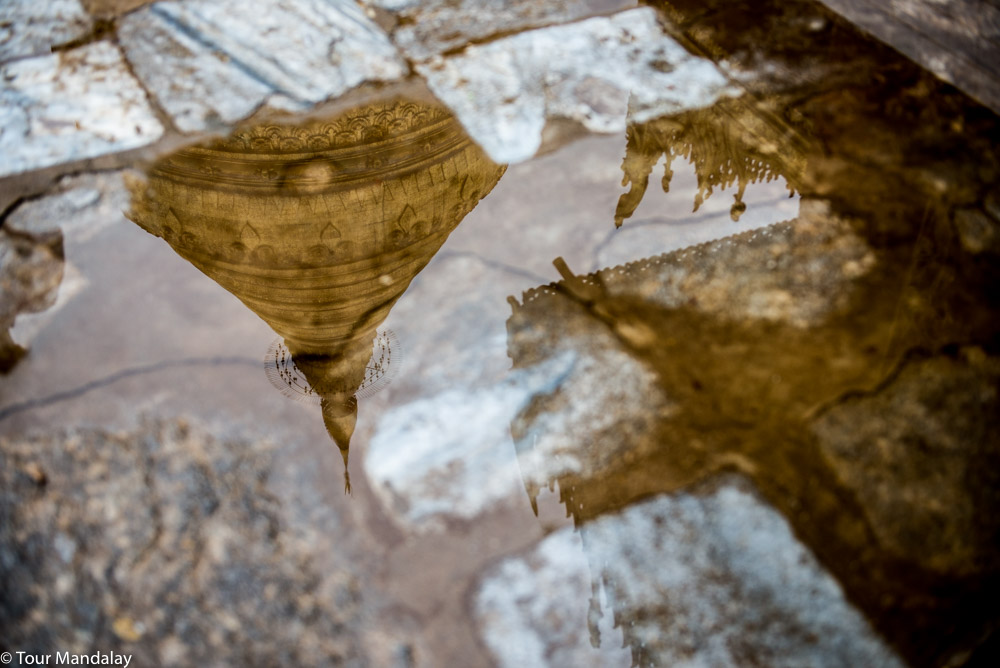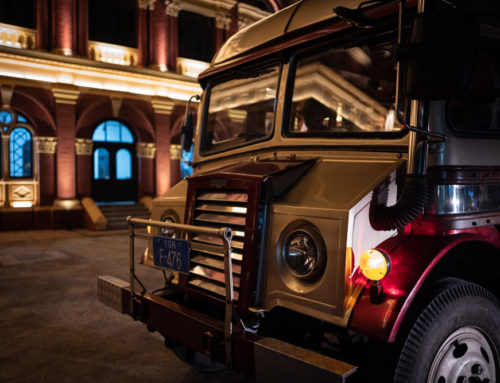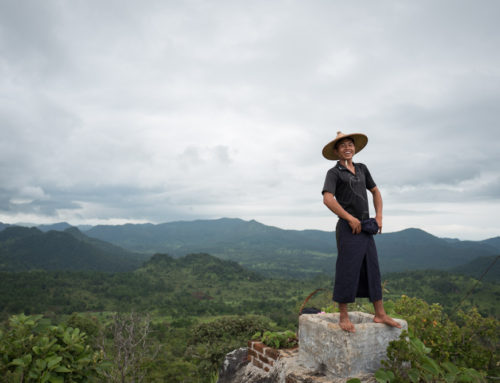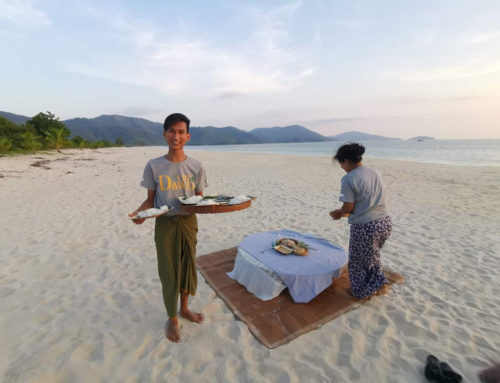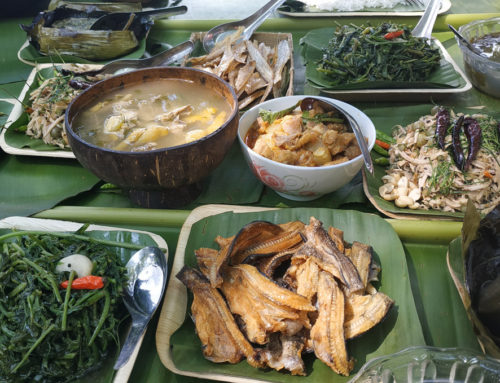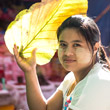ANAWRAHTA’S FAVOURITE FOUR

![]() OVERVIEW
OVERVIEW
Legend has it that, Anawrahta Minsaw, the founder of the Pagan Empire and the so-called father of the Burmese nation, received one of Lord Buddha’s tooth relics from the King of Ceylon (Sri Lanka). Eager to encourage the spread of Theravada Buddhism across the country, the most ancient branch of the religion, Anawrahta prayed for three more tooth relics, which he would later arrange to have enshrined in four pagodas. In order to determine the location of these, King Anawrahta ordered a white elephant to roam Bagan’s plains; wherever it stopped to rest would be the site of the monument. This superstition then led to the creation of Tant Kyi Taung, Shwezigon, Lawka Nandar and Tu Yin Taung. Looking to follow in the footsteps of Anawrahta’s white elephant and the much smaller ones made by local pilgrims, we’ll aim to visit all four of the pagodas in one day; by doing so, you’ll also be granted a wish*. Superstition aside, there’s no denying the cultural, historical and religious significance of King Anawrahta and the featured sites; we’ll seek to learn about this and more during the course of this full day tour.
*Most people believe that you will only be granted a wish if you visit all four pagodas before noon, make four donations of an equal amount and repeat the wish you’d like to make four times. At the time of King Anawrahta’s reign, it would have been almost impossible to visit all four pagodas in one go, so we suspect that this is a recent adaptation of the rule. Be warned, this matter is fiercely debated.
![]() PACE
PACE
Easy going
![]() TOUR PERIOD
TOUR PERIOD
Full day
![]() HIGHLIGHTS
HIGHLIGHTS
- Explore Bagan using various modes of transport
- Learn about King Anawrahta Minsaw, the founder of Pagan Empire and so-called father of the Burmese nation.
- Follow in footsteps of local pigrims as we visit the sites of Tant Kyi Taung, Shwezigon, Lawka Nandar and Tuyin Taung in one day.
- After visiting all four pagodas, you’ll be entitled to make a wish
![]()
ITINERARY IN DETAIL
(Click to read)
Myanmar culture is steeped in legend and today’s tour will be sure to give you a sense of that. Wanting to make sure we’re able to fit everything in (a wish hinges on it!), we’d recommend a start time of no later than 08:00 this morning.
The king behind this tale, Anawrahta Minsaw, is a very important historical figure to know about. Not only was he the first person to unify Myanmar – this has only happened a total of three times – but he also founded the Bagan Empire, introduced Theravada Buddhism to the country and laid the foundations for the rise of Burmese language and culture. It was also thanks to him, or should we say the many stone inscriptions he had made, that we saw the introduction of a semi-verifiable Burmese history in the 11th century.
One of our favourite tales that stemmed from this was Swe Daw Lay Su, or ‘The Legend of the Four Tooth Relics’. The story goes that the King of Ceylon (Sri Lanka), who also practised Theravada Buddhism, presented Anawratha with a sacred tooth relic; this one tooth relic would then turn into four as the pious king prayed for more to help with the spread of his newfound religion. Wanting to build four impressive pagodas in which to enshrine them, Anawratha arranged for one of his sacred white elephants to roam Bagan’s plains with a frontal bone relic of Lord Buddha attached. A declaration was also issued confirming that wherever the white elephant stopped to rest, a pagoda would be built in that very spot.
Effectively an embodiment of Theravada Buddhism’s birth in Myanmar, it’s easy to understand why these four pagodas are so highly revered. According to local folk lore, by visiting all of them in one day, the person committed enough to do so will be granted a wish. Keen to find out if there’s any truth to this belief, we’ll follow in the footsteps devout pilgrims have been making for centuries.
The first pagoda we’ll visit, and arguably the most popular among locals and tourists alike, is Shwezigon, or ‘the Pagoda on a Dune’. Construction of the pagoda began around about the middle of the 11th century, but it wasn’t until the early 12th century that it was completed during the reign of King Kyansittha, Anawratha’s son. No thanks to old age and numerous natural disasters, what you see today is a mish-mash of different periods. The lower level terraces are original, but substantial touch-ups have been made to the upper and middle sections over the last 500-years. After the earthquake of 1975, the decision was made to strengthen the structure using over 30,000 gold-gilded copper plates. As the prototype of all Burmese stupas, it’s easy to understand why so many people, from kings to pilgrims, have worked so hard to maintain Shwezigon throughout the years.
Next up is Tuyin Taung, a hilltop stupa located approximately 20-minutes away by car. Perched on a 25-million-year-old hilltop with glorious sweeping views of Bagan’s temple-strewn plains, it doesn’t take long to work out why Anawratha’s white elephant chose this as a desirable spot to rest. Located nearby are the remnants of an ancient quarry; it is said that Shwezigon Pagoda was built using stone extracted from this site and pious devotees transported the material by hand using a seven-mile human chain. Inside Tuyin Taung’s compound, fossilised prints of leaves can found in the small museum; these help to back up the suggested age of the mound and encourage you to think about what the region would have been like long before kings, white elephants and pagodas graced the plains.
Having enjoyed the views from Tuyin Taung, we’ll then drive for approximately 30-minutes to Lawka Nanda, a smaller pagoda that combines Myanmar and ancient Pyu-styles (a kingdom that flourished from 200 BC to AD 900). Lawka Nanda’s dome was once adorned with stucco designs of lotus flowers and the fruit of a star flower tree, until they were shaken off by the strong earthquake that shook Bagan to its core in 1975. This also opened up part of the pagoda, revealing a stone chest hidden within. Inside of this stone chest was an alloy chest, inside of which was a bronze chest, inside of which was a silver chest, inside of which was a gold chest, inside of which were some sacred relics including a tooth shaped stone piece. The relics were re-enshrined in Lawka Nanda and the chests put on display in Bagan’s Archaeological Museum.
For lunch, we’ll stop at a popular riverside restaurant. NOTE: The cost of lunch is not included; this will give you much more flexibility on the day.
To reach Tant Kyi Taung, our fourth and final pagoda, it’ll be necessary to cross the Irrawaddy River using a boat and ascend the mountain upon which the pagoda sits using a 4WD vehicle. Similar to Tuyin Taung, the views afforded from here are spectacular, with the main differences being that you’ll be slightly more elevated, the Irrawaddy meanders in the foreground and the best view looks out towards the east.
Wanting to get back across the river whilst there’s still light, make a wish (you never know, it might come true) and say farewell to the view. Once back at Bagan jetty, we’ll transfer you back to your hotel in time for dinner.
![]()
INCLUSIONS
- Transportation to/from hotel in an air-conditioned vehicle
- Boat and 4WD vehicle required to get to Tant Kyi Taung
- English speaking tour guide (for other languages, please enquire)
- Drinking water and hand towel
![]()
EXCLUSIONS
- Bagan zone fee
- Any meals
- Anything that’s not mentioned
![]() NOTES
NOTES
- You will be expected to remove your shoes when entering temples – wearing footwear that is easy to take on / off is highly recommended.
- A supplementary fee may apply on certain days – Tour Mandalay will inform you of this beforehand.
![]() PRINT
PRINT
![]() LOCATION
LOCATION

